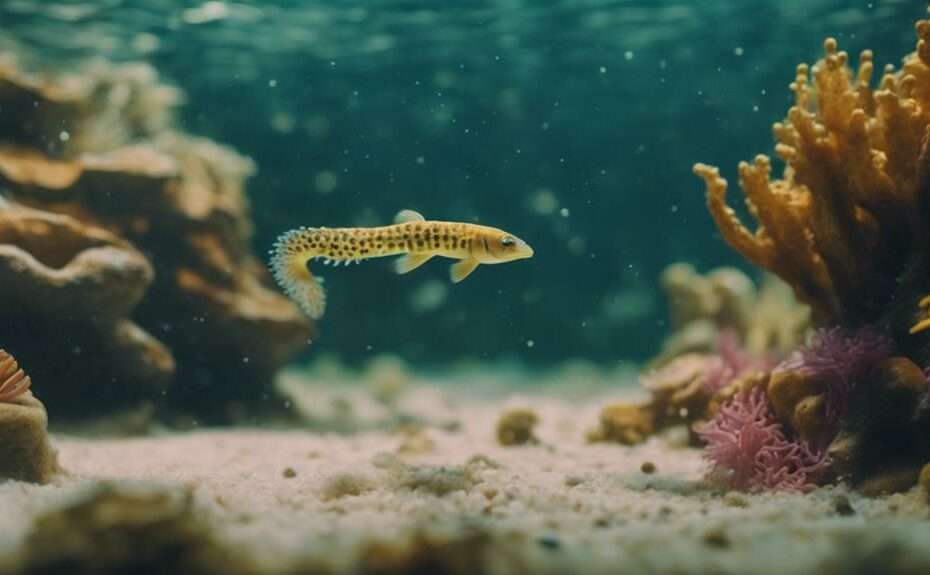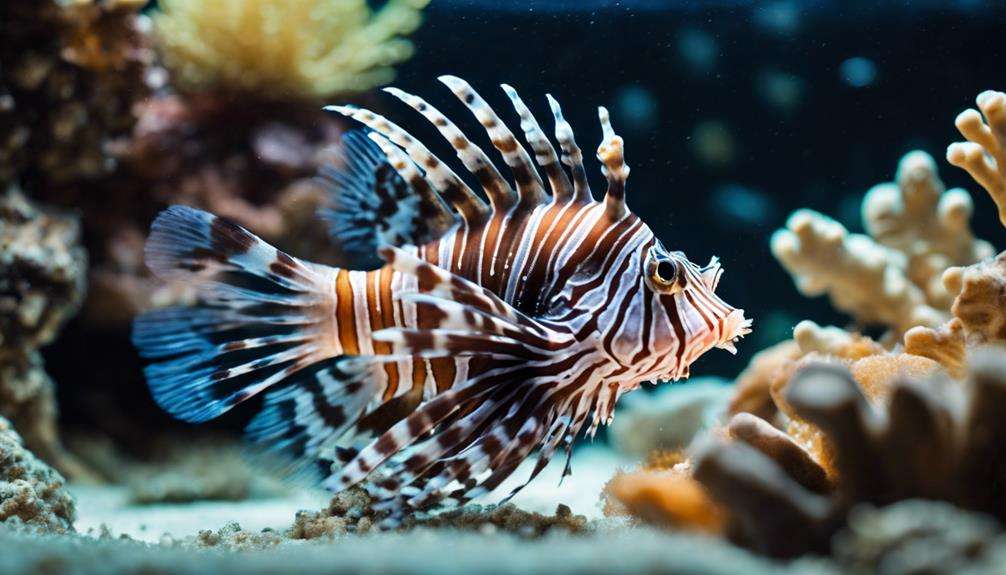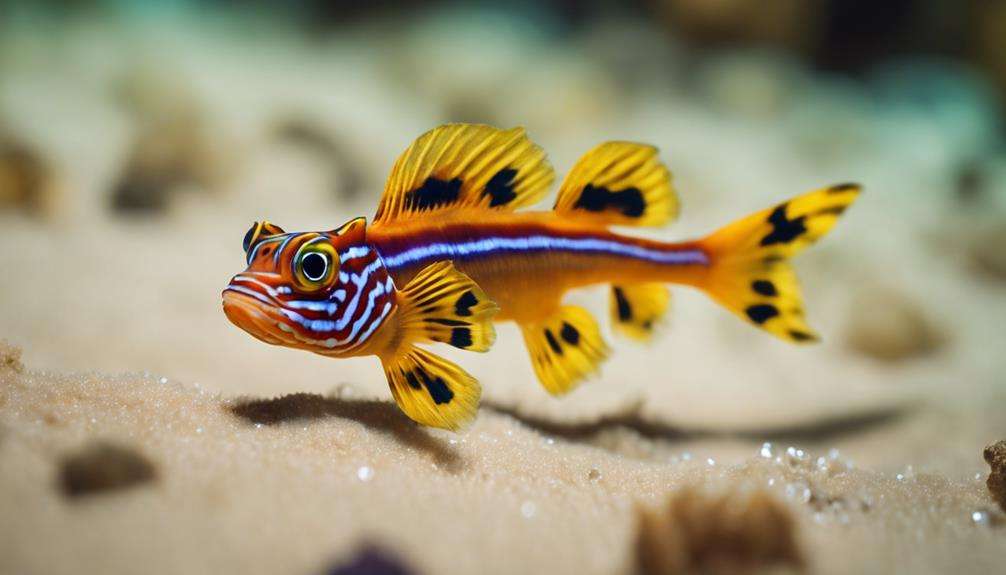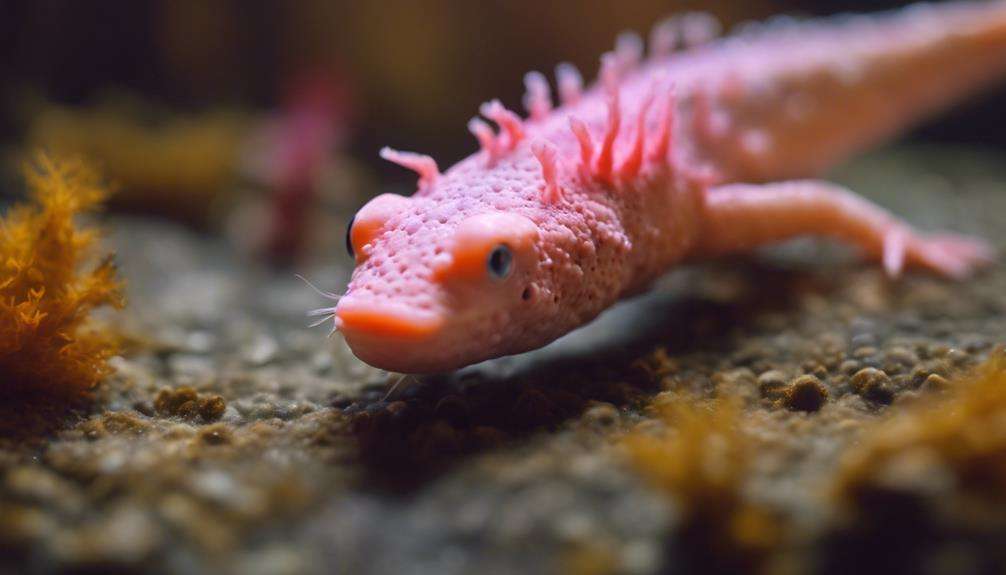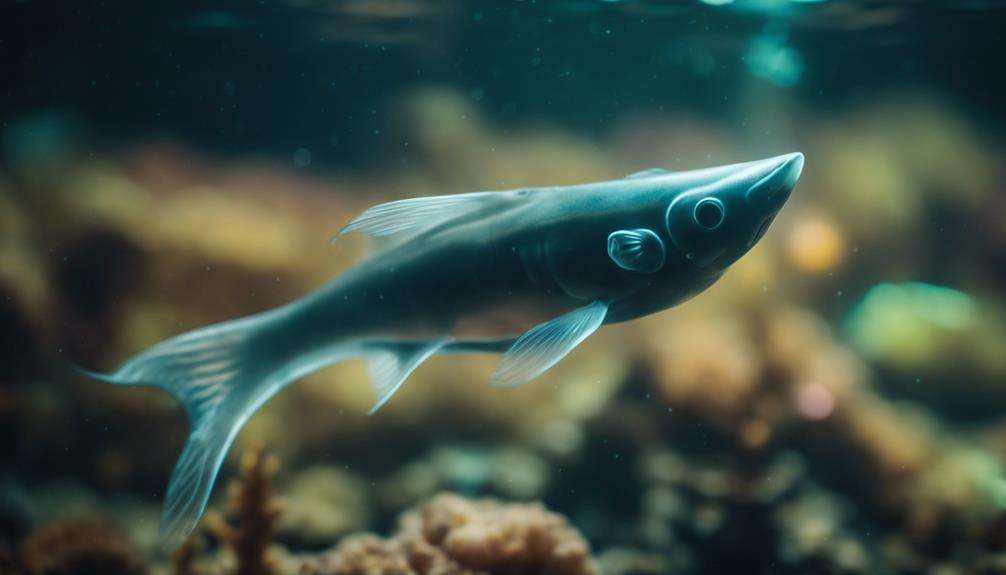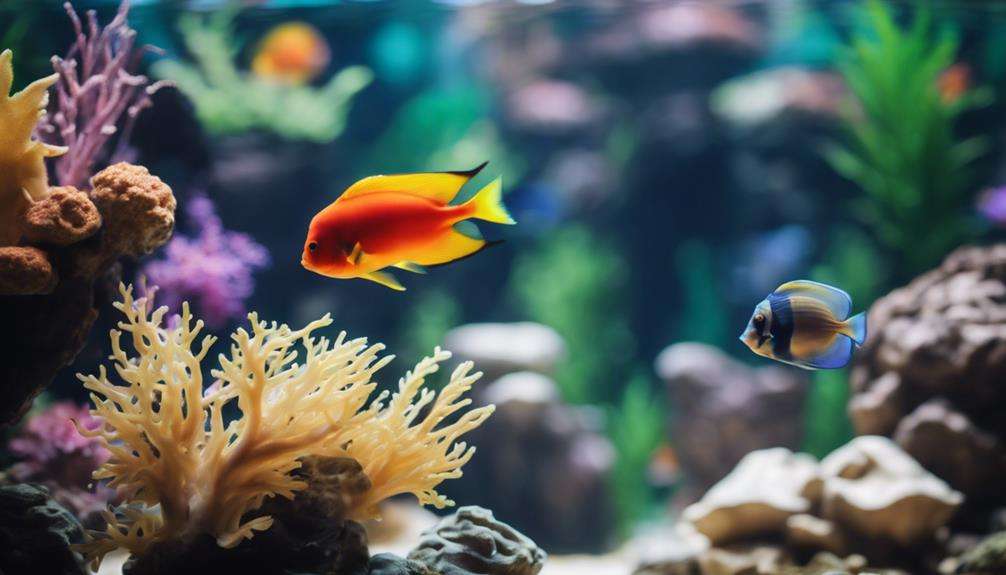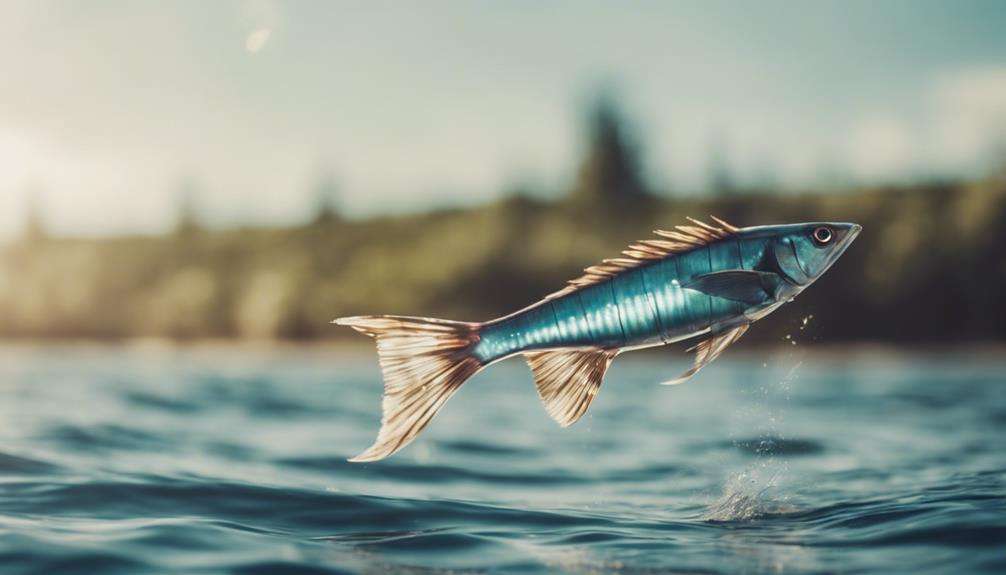Setting up a garden eel tank is like crafting a delicate ecosystem where every detail matters. The intricacies of creating a suitable environment for these unique creatures go beyond just placing them in an aquarium.
From the design of the tank to the choice of tank mates, each aspect plays a crucial role in their well-being. Understanding the complexities of their care requirements is just the beginning of unraveling why a garden eel tank setup is truly special.
Key Takeaways
- Burrows provide security, shelter, and feeding efficiency for garden eels.
- Dim lighting and shaded areas mimic natural habitat, reducing stress.
- Gentle water flow aids in feeding efficiency and reduces eel stress.
- Select peaceful tank mates to ensure a harmonious environment for garden eels.
Garden Eel Tank Requirements
To ensure the optimal habitat for Garden Eels, it's imperative to provide a tank with a minimum of 8 inches of sand substrate for burrowing. Garden Eels are known for their burrowing behavior, and the sand substrate mimics their natural habitat, allowing them to feel secure.
In addition to the sand substrate, the tank size should be a minimum of 125 gallons to provide enough space for the eels to move and burrow comfortably. The quality of water is crucial for the well-being of Garden Eels, necessitating quality filtration and a protein skimmer to maintain pristine water conditions.
These eels prefer a tank with a low to moderate current, replicating the gentle flow they experience in their natural habitat. Providing a clutter-free environment with minimal decor, live rock, and coral will further enhance the well-being of Garden Eels by creating a suitable and stress-free living space for these fascinating creatures.
Unique Burrow Design for Eels
The intricate network of burrows created by garden eels serves as crucial shelter and feeding grounds essential for their survival and well-being. These burrows are meticulously designed to cater to the specific needs of these fascinating creatures.
Here's why the unique burrow design for garden eels is so important:
- Sand Bed Digging: Garden eels create their burrows by digging into the sandy substrate, sometimes reaching depths of up to 3 feet. This digging behavior is crucial for their protection and security.
- Feeding Efficiency: Eels construct their burrows in a way that only their heads are exposed above the sand. This design allows them to efficiently capture food particles carried by the water column while staying safely tucked inside their burrows.
- Observation and Security: The burrows not only provide a strategic feeding position but also serve as observation posts. Garden eels can retreat into their burrows quickly if they sense danger, ensuring their security in the underwater environment.
Proper Lighting for Eel Health
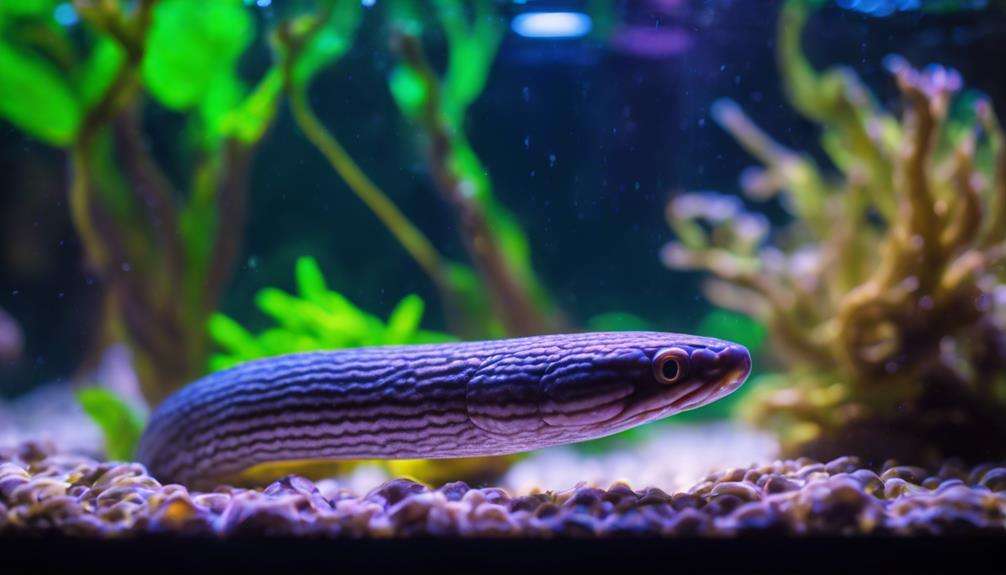
Dim lighting is preferred by garden eels in their tank setup to emulate their natural habitat and minimize stress. Bright lighting can cause garden eels to retreat into their burrows, reducing their activity levels.
To maintain optimal health and behavior, it's recommended to provide low to moderate lighting levels in the tank. Excessive lighting can make eels feel exposed and vulnerable, negatively impacting their feeding habits and overall well-being.
By offering shaded areas within the tank, garden eels can feel more secure, encouraging their natural burrowing behavior. This sense of security is vital for the eels' mental and physical health.
Therefore, it's crucial to create a lighting environment that replicates the dim conditions of the ocean floor where garden eels thrive. Proper lighting not only supports the eels' behavioral needs but also plays a significant role in maintaining their overall health within the tank setup.
Specialized Water Flow Needs
Maintaining an appropriate water flow level is crucial for meeting the specialized needs of garden eels in their tank setup. Garden eels require a gentle current to ensure efficient food delivery to their burrows without causing excessive movement. To achieve this, proper powerhead placement is essential. Here are three key points to consider in addressing the specialized water flow needs of garden eels:
- Gentle Current: Garden eels thrive in tanks with a gentle water flow that aids in carrying food to their burrows. Adjusting the water flow to strike a balance between delivering food effectively and not causing distress to the eels is paramount.
- Proper Powerhead Placement: Placing powerheads strategically in the tank is crucial for directing the flow of food towards the eels' burrows. This ensures that the eels can access their meals without unnecessary disruption.
- Minimal Impact: Avoiding excessive water movement is essential to prevent stressing the timid garden eels. Additionally, ensuring minimal impact from lighting, corals, and invertebrates in the tank environment is vital for the well-being of these delicate creatures.
Suitable Tank Mates Selection
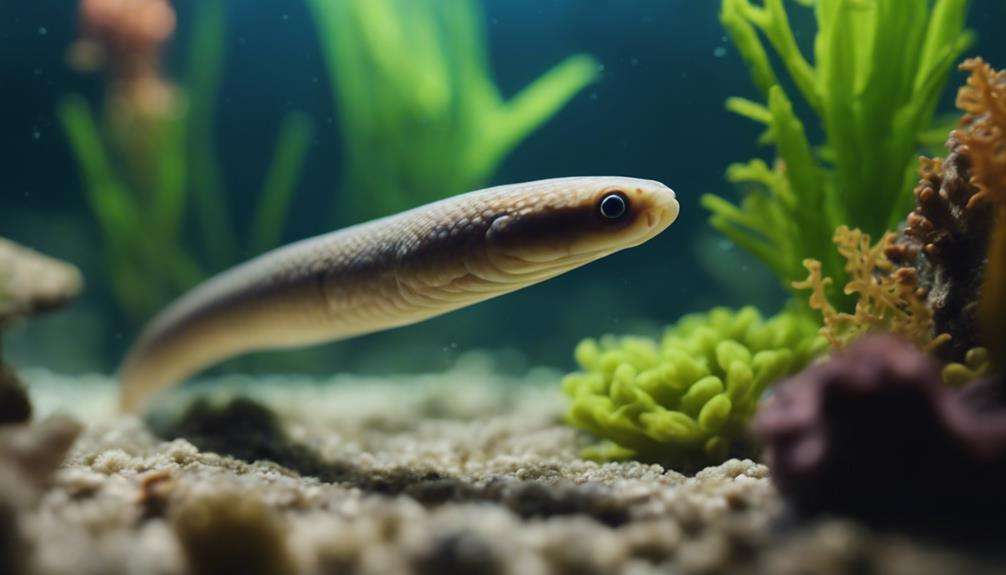
Selecting suitable tank mates for garden eels involves careful consideration of peaceful and passive species. Examples include seahorses, pipefish, Cerith snails, and Hermit crabs. These choices help ensure minimal stress and compatibility in the tank environment. It's vital to choose reef-safe and peaceful fish that won't pose a threat to the garden eels or compete aggressively for resources.
Avoid introducing aggressive or digging species that may disrupt the eels' burrowing behavior or cause them stress. Limit the number of tank mates to prevent overcrowding, which can lead to heightened levels of stress among the inhabitants. Passive tank mates like snails and crabs can coexist well with garden eels, provided that their interactions are monitored closely to ensure that they aren't causing undue stress.
Feeding Challenges and Solutions
Garden eels present a unique challenge due to their preference for feeding from the water column. To ensure their nutritional needs are met, offering meaty and live foods like freshwater ghost shrimp is crucial.
Preventing overfeeding risks by providing a suitable tank diet and stimulating feeding behavior with live feeder shrimp are essential considerations.
Feeding Habits of Eels
To ensure the optimal feeding of garden eels in a tank setup, it's crucial to provide a diverse selection of live and meaty foods delivered through a gentle current for these shy creatures to pick out and consume effectively. When feeding garden eels, consider the following:
- Live Feeder Shrimp: Initial live feeder shrimp can stimulate their eating behavior.
- Zooplankton and Oyster Eggs: These are suitable foods that can be included in their diet.
- Copepods and Shrimp: Offering a variety in diet with foods like copepods and shrimp is essential for the health and well-being of garden eels.
Suitable Tank Diet
When considering the suitable tank diet for garden eels, it's important to address the feeding challenges they present and provide effective solutions for their nutritional needs. Garden eels primarily feed on zooplankton and fish eggs in the water column, requiring a diet of live brine shrimp, copepods, and other small feeder fish.
The shy nature of garden eels can make feeding challenging, as they prefer live foods over frozen options like mysis shrimp. Transitioning them to frozen foods may require patience. To ensure their health and nutrition, it's crucial to offer a variety of vitamin-enriched foods to meet their dietary requirements.
Providing a diverse diet that includes live food and vitamin-enriched options is essential for the well-being of these fascinating creatures.
Preventing Overfeeding Risks
To ensure the optimal health and well-being of your garden eels, it's crucial to understand and address the risks associated with overfeeding them. Here are key strategies to prevent overfeeding risks:
- Implement a Feeding Schedule: Establish a consistent feeding routine with appropriate portions to avoid overfeeding garden eels.
- Monitor Behavior and Adjust Accordingly: Observe the eels' feeding habits and adjust the amount of food provided based on their consumption and behavior.
- Maintain Water Quality: Overfeeding can lead to water quality issues. Ensure proper filtration and regular water parameter checks to safeguard the well-being of your garden eels.
Monitoring Eel Behavior Closely
Close observation of garden eel behavior reveals essential insights into their well-being and tank dynamics. Garden eels exhibit distinct burrowing behavior, spending most of their time hidden in the substrate. Monitoring their burrowing activities is crucial as it reflects their comfort level in the tank. Changes in burrowing patterns can indicate stress or dissatisfaction with their environment.
Additionally, observing their feeding habits is vital to ensure they're consuming an adequate diet and interacting positively with tank mates. By closely monitoring their behavior, aquarists can detect early signs of illness, stress, or environmental issues. This proactive approach allows for timely intervention to address any concerns and maintain the eels' optimal health.
Creating a suitable environment that aligns with the eels' specific needs, based on behavioral observations, is key to promoting their overall well-being and ensuring a harmonious tank ecosystem.
Frequently Asked Questions
What Are Some Interesting Facts About Garden Eels?
Garden eels exhibit unique behavior by burrowing in sand, with long bodies that aid in this process. They live in groups, feeding on zooplankton and fish eggs carried by currents. Their color variations and mating rituals make them intriguing to observe.
What Size Tank Does a Garden Eel Need?
For a garden eel, you will want a tank that's at least 125 gallons, providing space to burrow. Include 6-10 inches of sand for the ideal substrate. Maintain low to moderate current flow for their comfort.
How Do Garden Eels Adapt to Their Environment?
Garden eels adapt to their environment by constructing burrows for shelter, swaying in the current to capture food, and retracting swiftly when threatened. Their social behavior involves living in colonies and communicating through body movements.
Can You Have a Garden Eel as a Pet?
You can have a garden eel as a pet if you provide a suitable tank setup with proper sand depth, social companionship, peaceful tank mates, and a steady current for feeding. Ensure their health and well-being by meeting their specific requirements.
Conclusion
In conclusion, the unique care requirements of a garden eel tank setup make it a special and rewarding challenge for aquarists.
Did you know that garden eels can consume up to 10% of their body weight in food each day? This fascinating statistic highlights the importance of providing a suitable environment and diet for these shy and delicate creatures to thrive in captivity.
Monitoring their behavior closely and meeting their specific needs are essential for their well-being.
